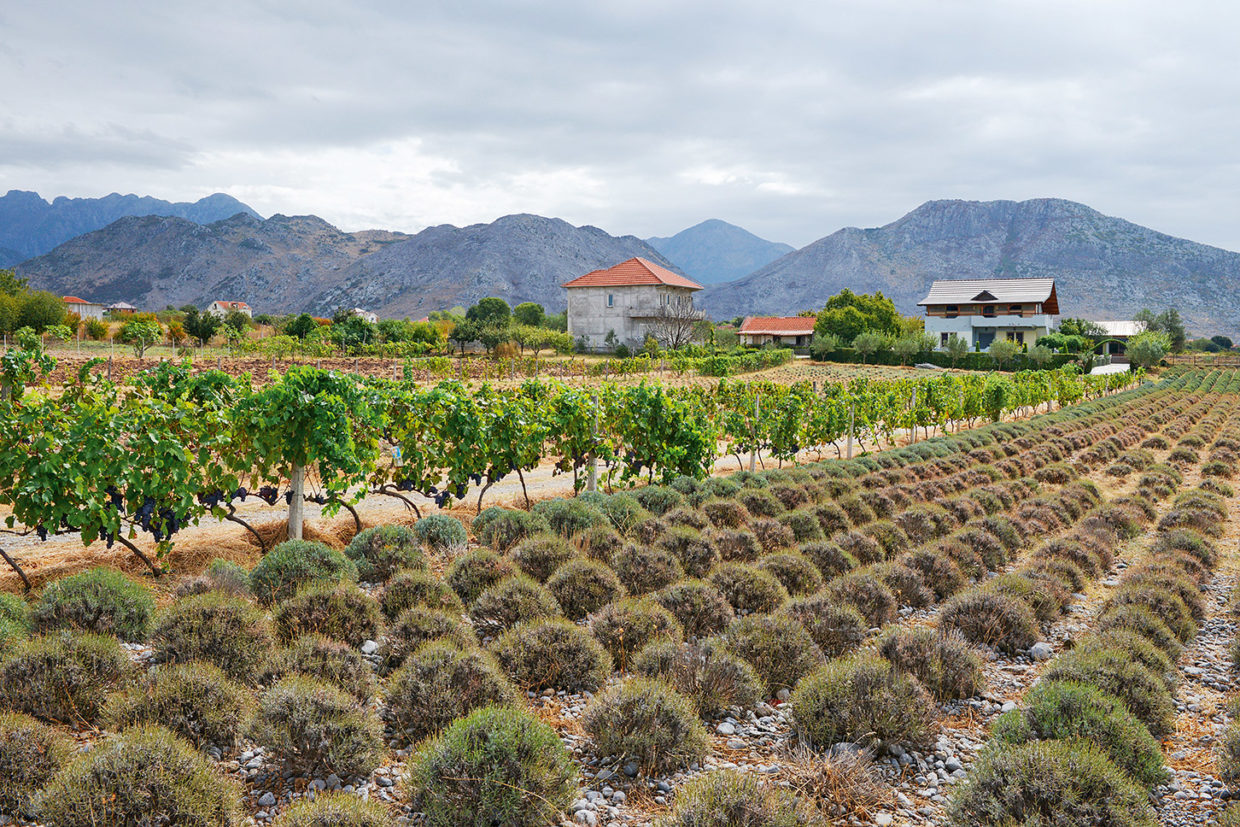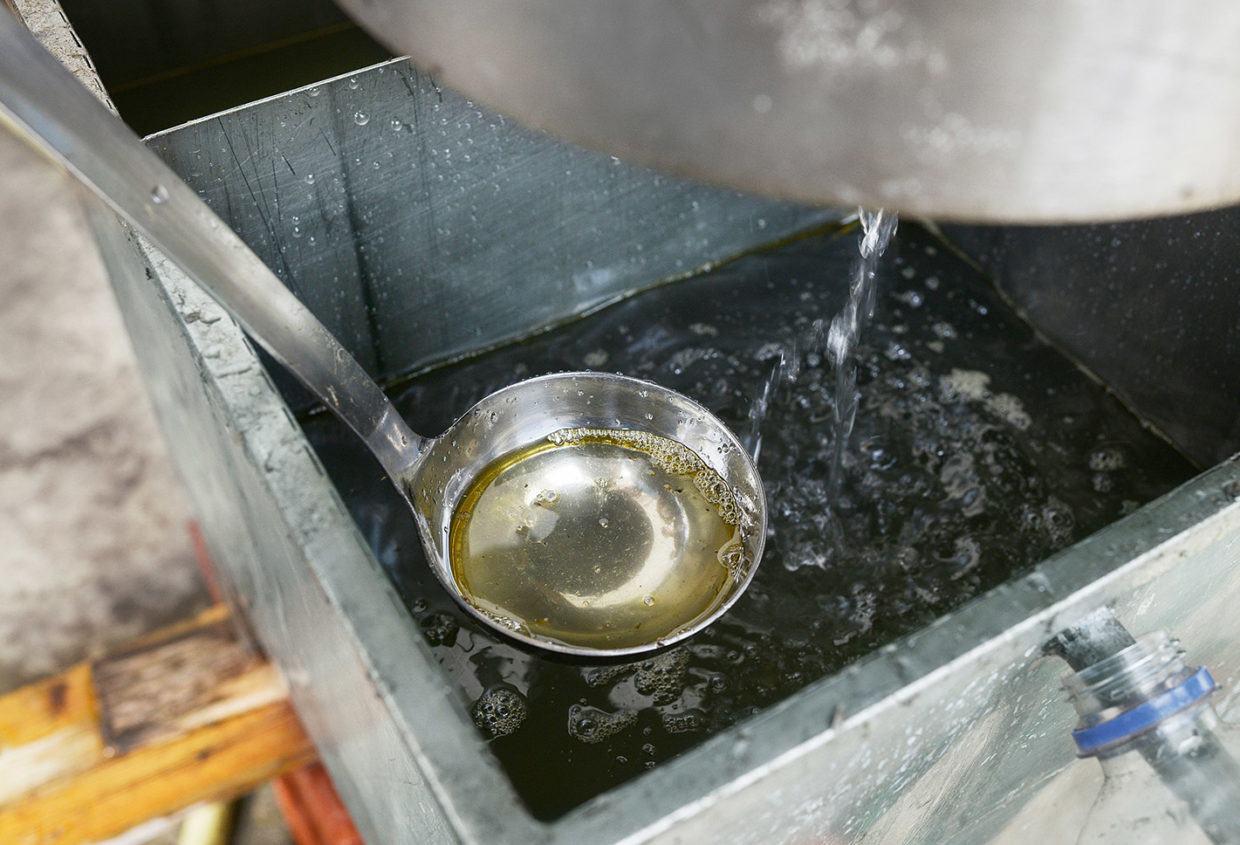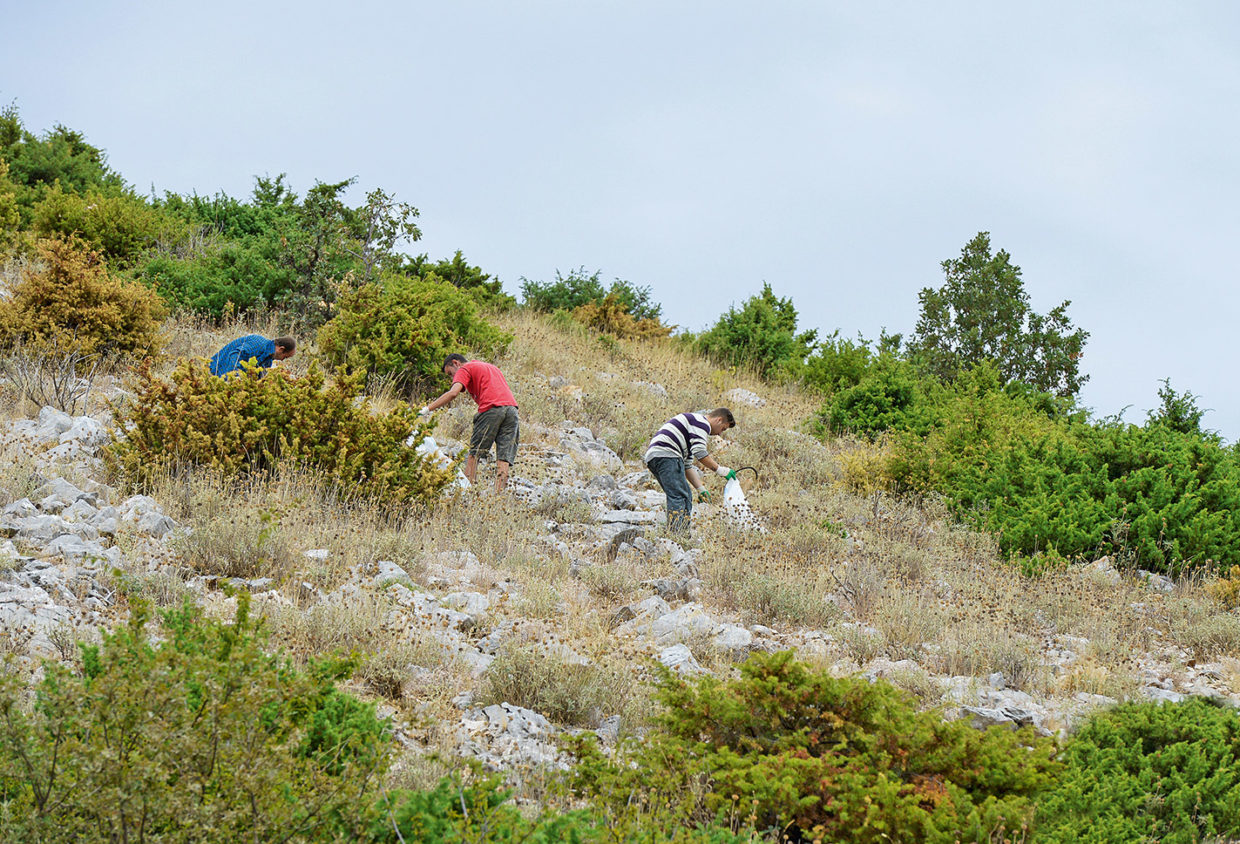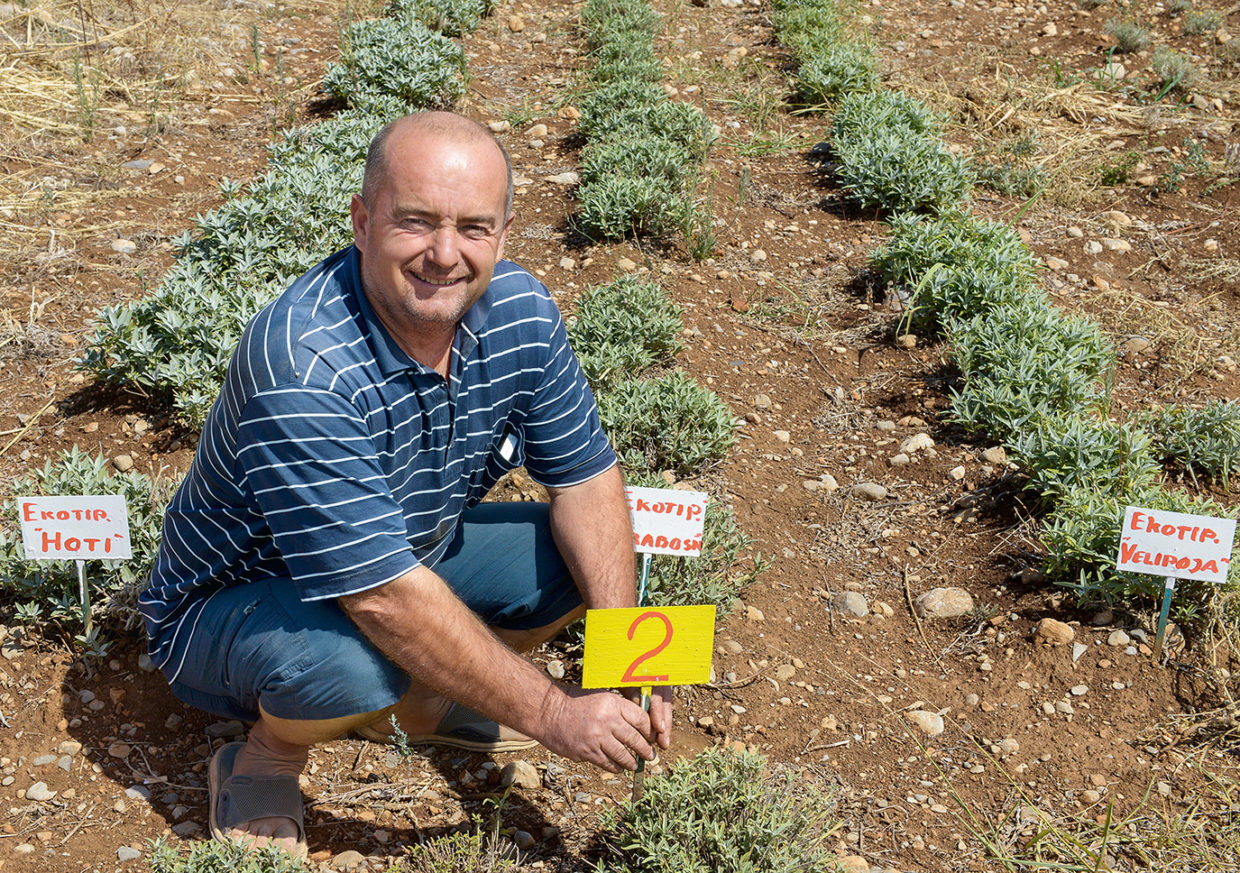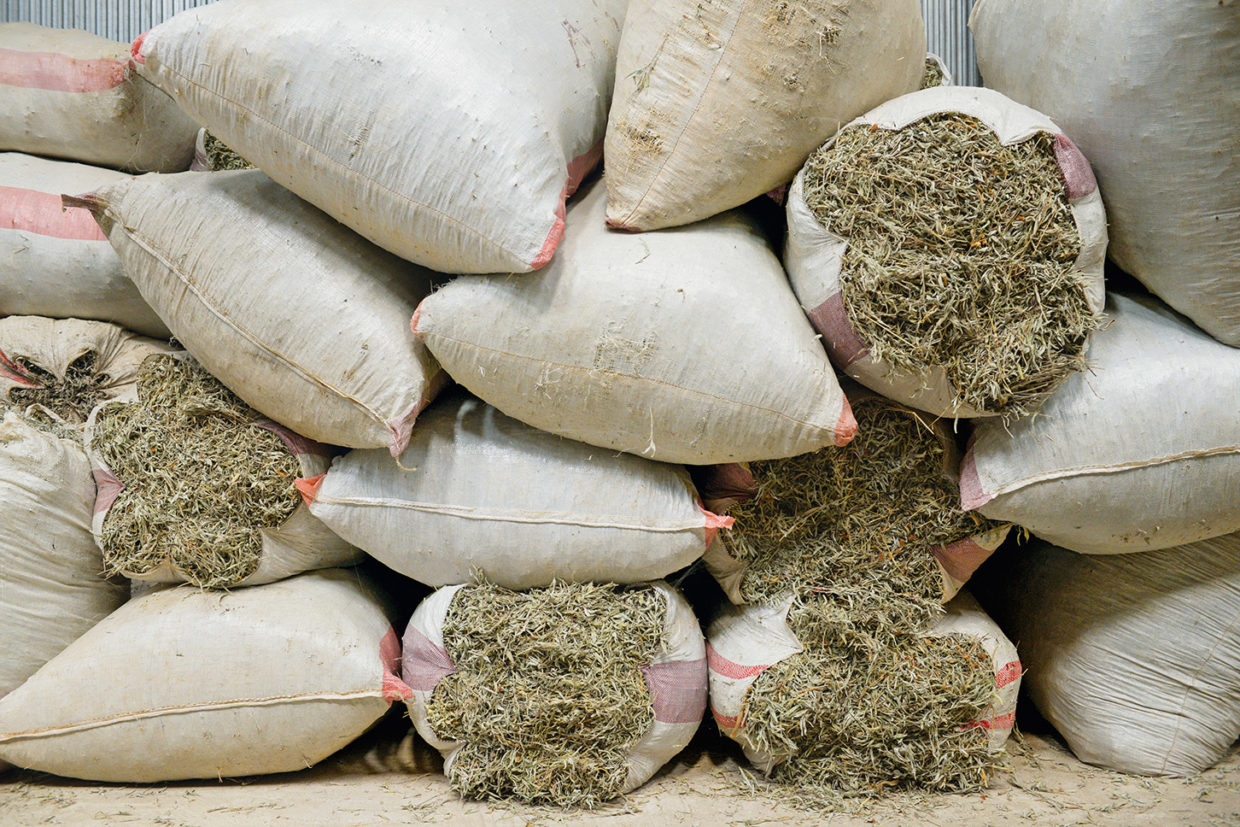Ilir Gjolaj is squinting as he surveys his fields in north-western Albania. A tractor is ploughing through the stony ground, throwing up a trail of dust as high as a house behind it. In the distance, Lake Skadar glitters in the sun in front of the bare mountains of Montenegro. “Unfortunately we barely had any rain this year,” says the 40-year-old. With his partners from the company Agro-Map, he is growing sage, lavender, cornflowers and various other medicinal and spice plants. Yields are normally 2-4t/ha. This year they averaged just 1.5t/ha.
Uncertain environment
But despite that, Mr Gjolaj has done well. He bought his first hectare here in Koplik 13 years ago. For €200 (£178). Since then his family has come to own 30ha. “Everybody thought I was crazy then, because I was putting my money into a pile of stones, nobody wanted to go into farming.” Mr Gjolaj chuckles: “Now many people want their land back.”
Market-orientated agriculture has not existed in Albania for long. The fall of the Iron Curtain coincided with the fall of the communist regime here. However, there was then a long period of political instability. The Albanian parliament only managed to pass land reform in 2006. Each person received about 0.4ha, so a family of six would get 2.4ha. Haggling on a huge scale began. Land was exchanged, sold, and awarded with handshakes as well as with underhand tactics. There were, and even today are barely any land titles.
Everybody thought I was crazy then, because I was putting my money into a pile of stones.
Ilir Gjolaj
The holdings are small, with an average size of just 1.2ha, and of the 300,000 holdings in the country, only a fifth operate commercially. Because half of the population of Albania lives abroad, many owners don’t use their land, so a quarter of the arable acreage lies fallow.

The treasure of the Albanian economy lies in the mountains: Wild herbs.
A lot of potential
For Mr Gjolaj, success didn’t just fall in his lap. Initially, he tried to make it abroad, working in Italy and starting a small retail business. Then he returned. “One second on the field connected me straight away with the centuries-old roots of my family, who always worked the land here.”
Medicinal and spice plants have a tradition in the Koplik region as they suit the chalky ground, since the abundance of stones store heat. The plants contain a lot of useful substances, and Albania is one of the largest producers of these plants in the world. Wild harvesting provides a great deal, and Albania has many different species that can only be found here or in very few other countries. Harvesting sage, juniper berries, thyme or lemon balm offers people in the outlying regions a good seasonal income. But over the past 10 years, the plants have also increasingly been cultivated.
Because of high demand, there has been a boom. In the region of Koplik, the area of sage and lavender alone is now thought to have grown to 4,500ha. With labour costs of €7-10 (£6-9) a day, Albania is very competitive, since cultivating medicinal and spice plants requires a lot of manual work. The saplings must be planted by hand, and then weeds need to be removed regularly, because the plants only grow slowly. They are also harvested by hand.
Long tradition

Xheladin Zekaj inspects lavender and sage plants in a storage and drying hall which he shares with other producers.
Even during the period of communism, medicinal and spice plants were cultivated in the region and exported. “At that time this took place on a maximum of 2,000ha,” says Agro-Map producer Xheladin Zekaj. “Corn, tobacco and wheat were grown on the rest of the acreage. The 58-year-old is standing not far from the area under cultivation by Agro-Map in a barn that he uses together with other farmers for storage and drying.
In total they cultivate sage and lavender on 150ha. Plants are laid on shelves to dry. Sacks are all around, filled to overflowing with lavender, shimmering with purple. It smells like a beauty store. “When I started farming in 2006, there were very few of us,” the trained agricultural economist remembers. He was active for a long time in the district’s public administration. Back then, a tonne of dried lavender with stems would sell for US $3,500 (£2,685), and sage for $1,800 (£1,381). “Today we don’t even get half that.”
When I started farming in 2006, there were very few of us.
Xheladin Zekaj
The large supply forced prices down. To add to that, further processing isn’t always up to standard and imported plant matter is being used. Farmers used to pick their cuttings from the best wild plants in the mountains. But increasingly they have been using varieties imported from France or Bulgaria. “They may grow faster, but they contain fewer ingredients and are more susceptible to drought than the local varieties,” says farmer Agim Rama, who grows spice and medicinal plants in the region. However, he is committed above all to obtaining and developing local varieties. In recent years he has bred his own variety of sage from these local varieties.
Adding value
However, that is not going to solve one major problem for growers of spice and medicinal plants: Just a few exporters and processors control the market. That is why Mr Gjolaj took the bull by the horns 10 years ago and invested in his own distilling machine, which was initially a second-hand Soviet model. Now, with his two partners from Agro-Map, he has acquired a new one.
It runs with a quiet whisper in a draughty hall – a deliberate choice so that the employees don’t breathe in too many vapours. “The new machine gets the entire oil content out of the plants, the old one didn’t even manage half.” The yield is low though, with the oil dripping into a plastic bottle that hangs from the machine’s huge hopper.
A tonne of Helichrysum produces just 1.5 to 2 litres of oil, and lavender produces 6-10 litres. So how can that pay off? With prices of up to €1,500/litre (£1,335/litre). That is how much cosmetics companies or pharmaceutical producers pay for these concentrates – if they are of good quality. Agro-Map has invested in that quality. The young company could not rely on any help from the state or banks for this. It had to raise all the investments by itself, so profits are immediately reinvested. “Luckily the demand for high-quality oils is very good,” explains Shkelqim Karaj, one of the two other Agro-Map partners. He studied agricultural sciences in Tirana and at the University of Hohenheim, Germany, where he now teaches.
Hoping for EU

John Deere dealer Xhorxhi Marku is convinced that all Albanian farmers would profit from a European membership.
Albania has been a candidate to join the European Union since 2014, and Mr Gjolaj and Mr Karaj would welcome its membership. Exporting their products, for which they already have to meet EU standards, would become much simpler. There would be supportive investments, subsidies and structural support for agriculture. They also hope that all producers would then have to work to the same conditions. “All of our almost 40 employees are officially registered, but we have to compete with holdings that pay no taxes on their workers whatsoever,” says Mr Karaj.
Many farmers and food companies in Albania see the situation similarly, whether they are dairy farmers, dairy processors, beekeepers, or fruit and vegetable growers. They are not worried about competition with low-priced products from abroad. That has been here for a long time already. Since Albania joined the WTO, Albanian producers have had to contend with goods from Greece, Italy, Macedonia and Serbia; all countries with highly subsidised agriculture. But in Albania not even the fuel for farmers has become cheaper. Even the many smallholdings are hoping for better support, although it will be particularly hard for them to meet EU standards.
Joining the EU would open up new prospects, including for mechanisation.
Xhorxhi Marku
Xhorxhi Marku also has great expectations for joining the EU. For many years he has been running an agricultural machinery business in Tirana with his son, where they sell John Deere tractors. The office is located on the road to the airport, with a workshop building and spare parts warehouse nearby. However, the only evidence of the planned new company building so far is the foundations, as construction was blocked by the authorities for no clear reason.
Albania is placed 83rd on Tranparency International’s Corruption Perceptions Index. But Mr Marku is undeterred. “We have good land and a climate that allows us to harvest fruit and vegetables throughout most of the year. Joining the EU would open up new prospects, including for mechanisation.” Mr Marku is already benefitting from Albania’s status as a candidate country. A program by the Danish and German governments to modernise the Albanian agricultural sector is providing farmers with investment aids and credit for tractors. Some of them are his customers.
Modernisation progresses
The dealer takes us to meet Agim Metka’s family, who work a farm of almost 6ha in the mountains of the southern Berat district. The journey there goes past cherry plantations and small corn fields. It’s not rare to see farmers working with sickles and piling the corn on donkeys’ backs. It has only been a few months since Mr Metka and his three sons started working with a new John Deere 5055 E. The first big job that they used it for was in the extremely dry summer. “We were able to water the fields and as a result save the harvest,” explains Mr Metka’s 30-year-old son Engiell. Right now they are ploughing one of the fields to sow cereals. “We don’t have to wait for the contractor any more and with that we also save on costs.”
Soon the family wants to lease an additional 10ha. “Then hopefully my sons won’t need to work as harvest workers in Greece any more,” says the father, raising a glass of fruit schnapps that they have distilled themselves. You have to try one. To hospitality. And to the future.
Albania in Numbers
- Population: 2.9 million
- Area: 28,748 km², of which 1/4 arable
- 19 % of GDP comes from agriculture, 2/5 of the population works in the agricultural sector
- at its peak, almost 25 % of the GDP was made up of payments from Albanians overseas to those back home, in 2015 it was just 6 %
- member of WTO since September 2000
- candidate for EU membership since mid-2014
- Until 2020 the EU has a promotion budget for agricultural modernization and rural development of € 90 million. But Albania can only implement this budget autonomously once it has set up management and control systems up to the EU’s standards.


